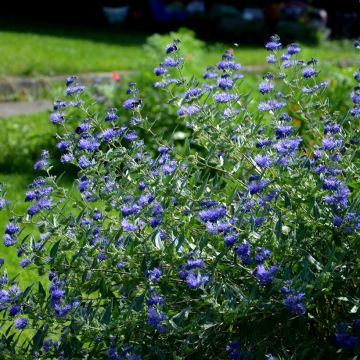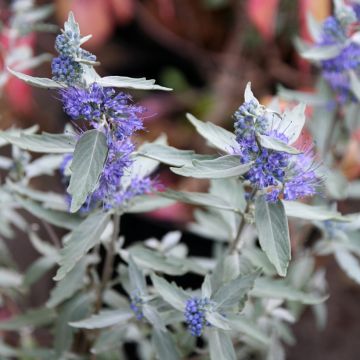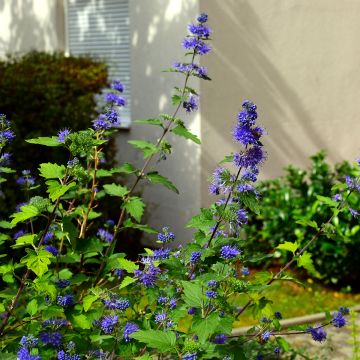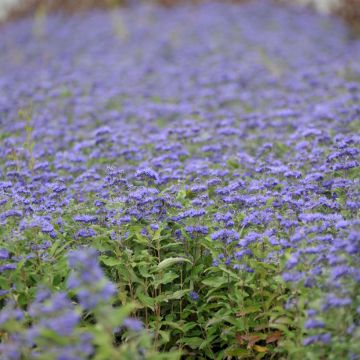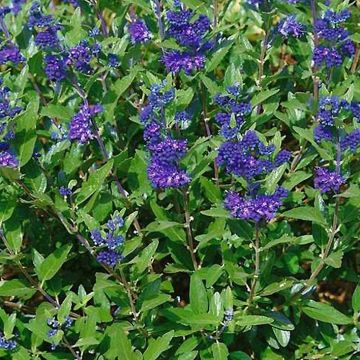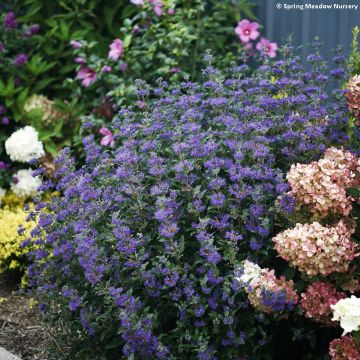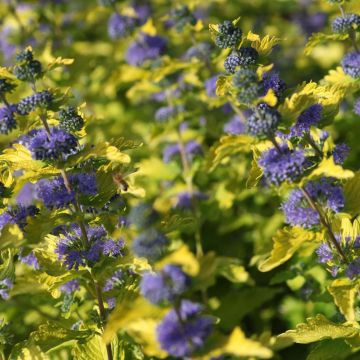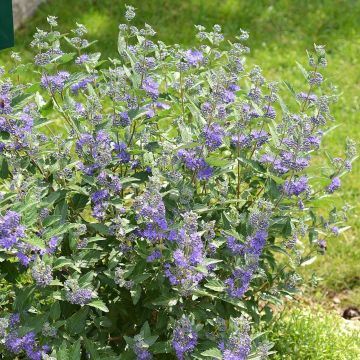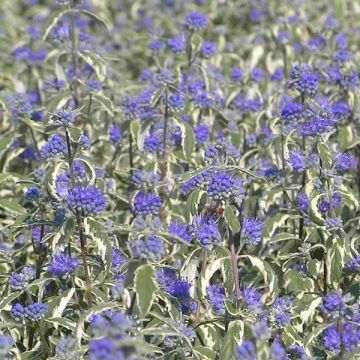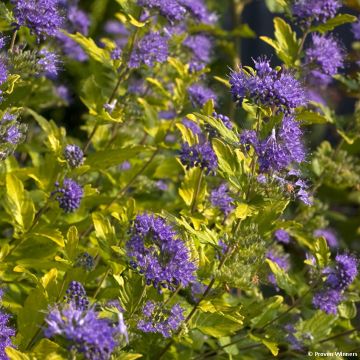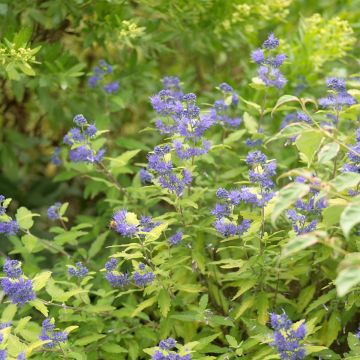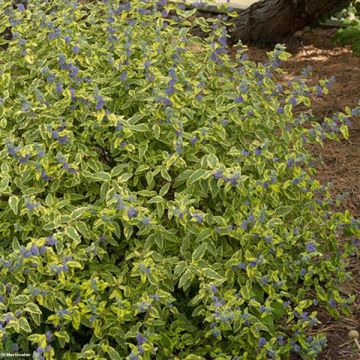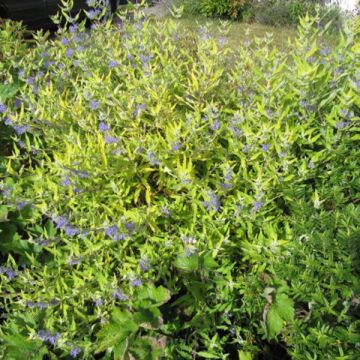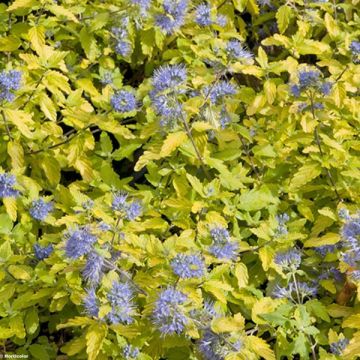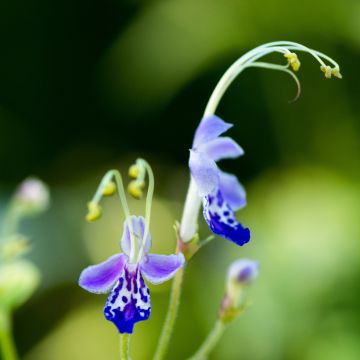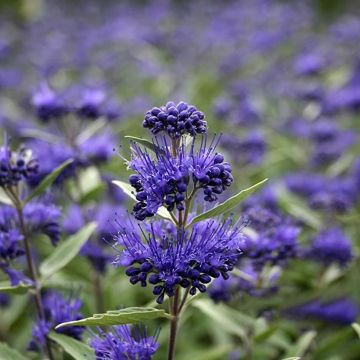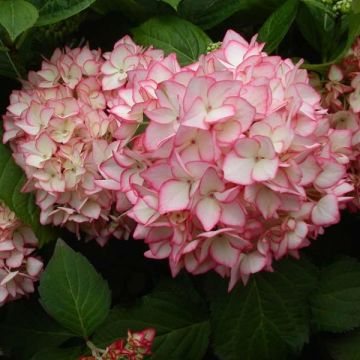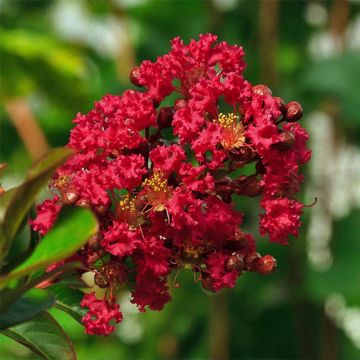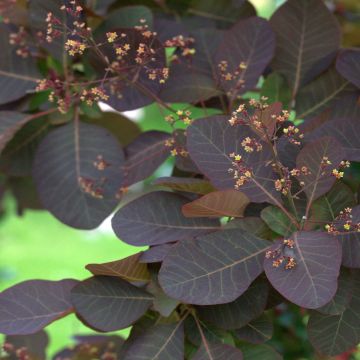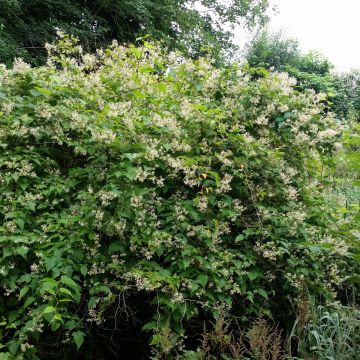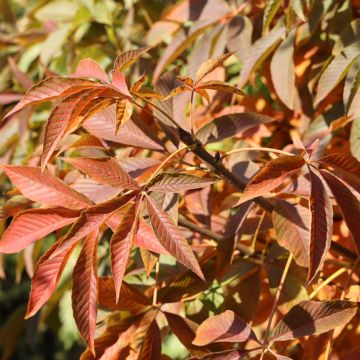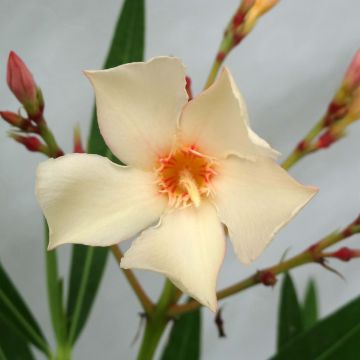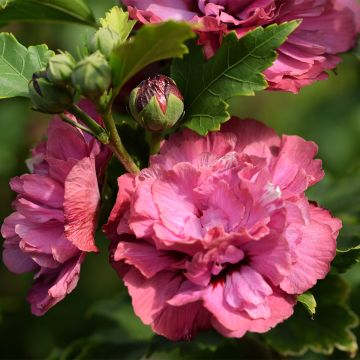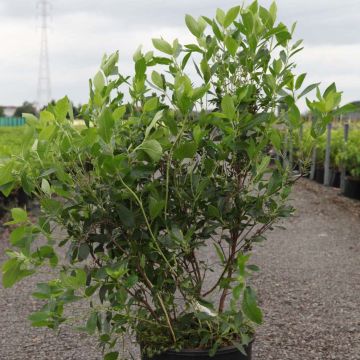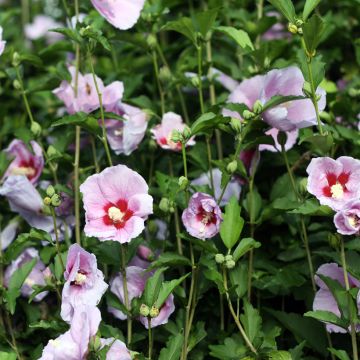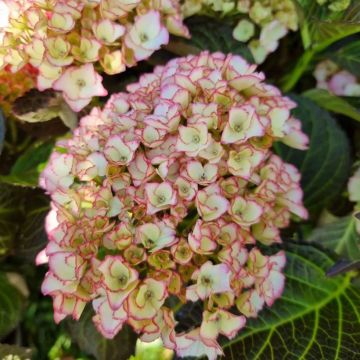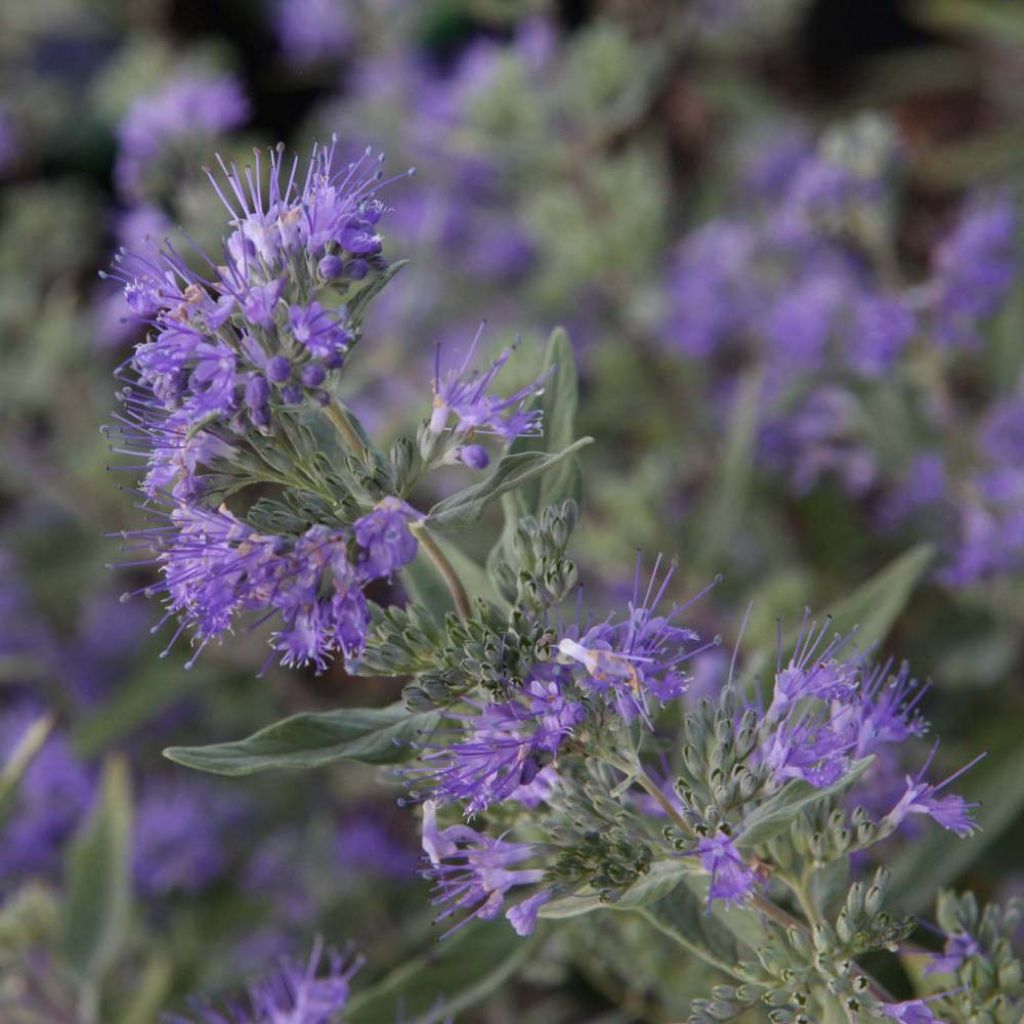

Caryopteris clandonensis Ferndown - Bluebeard
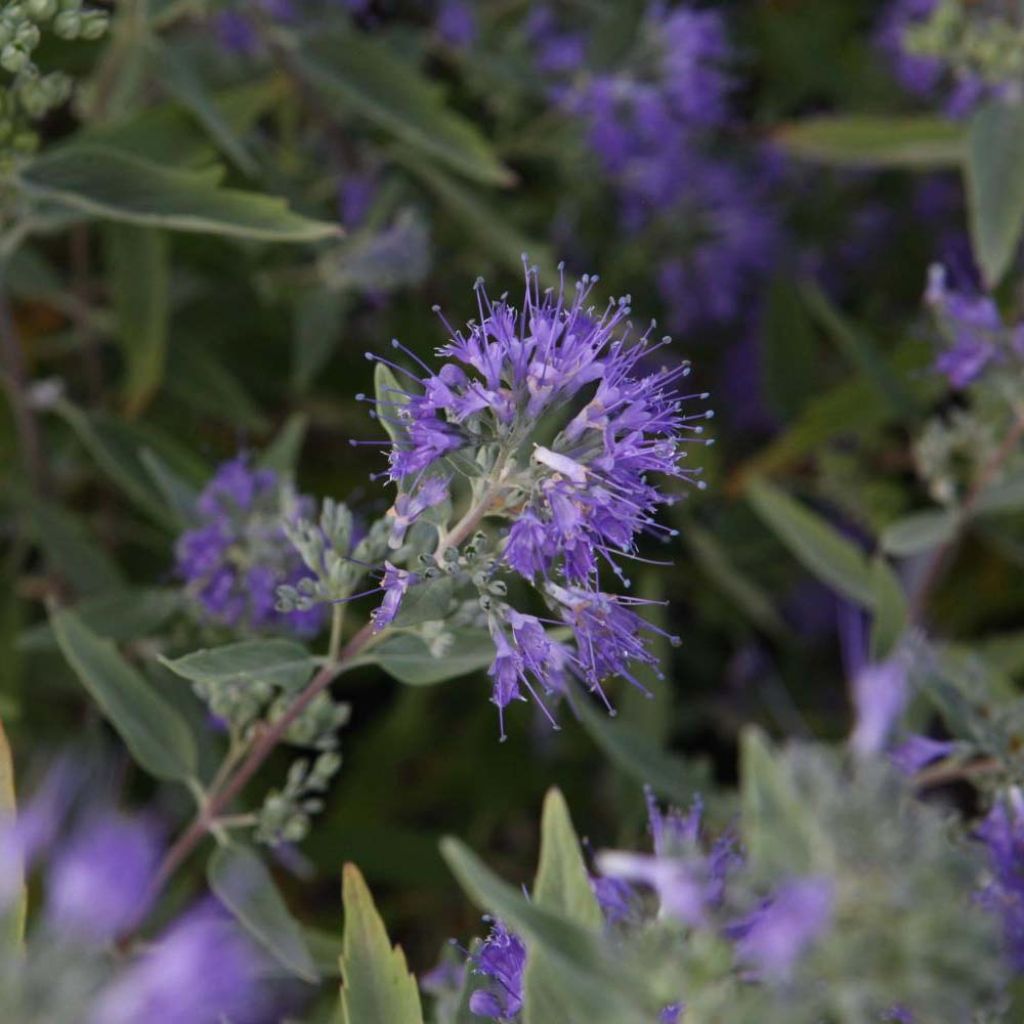

Caryopteris clandonensis Ferndown - Bluebeard
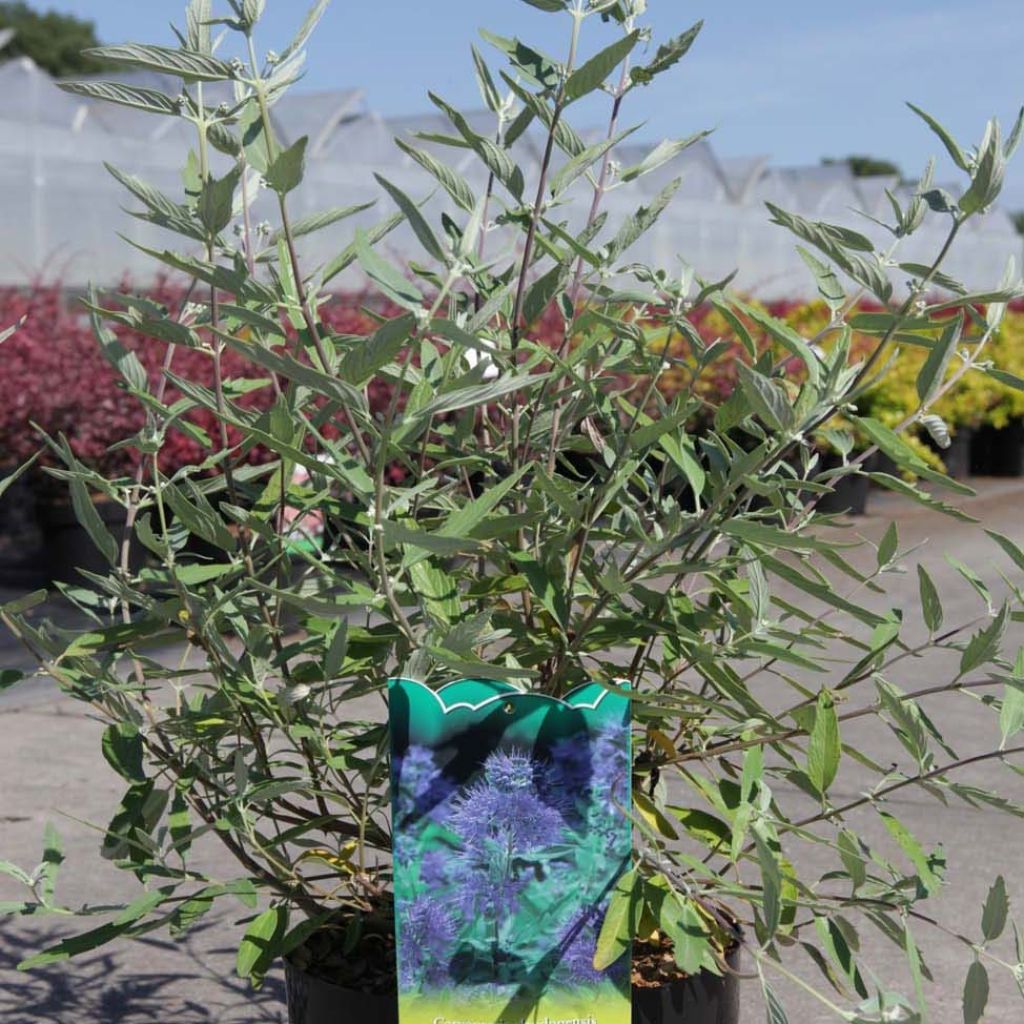

Caryopteris clandonensis Ferndown - Bluebeard
Caryopteris clandonensis Ferndown - Bluebeard
Caryopteris x clandonensis Ferndown ®
Bluebeard, Blue Spirea, Blue Mist Shrub
Why not try an alternative variety in stock?
View all →This plant carries a 24 months recovery warranty
More information
We guarantee the quality of our plants for a full growing cycle, and will replace at our expense any plant that fails to recover under normal climatic and planting conditions.
From €5.90 for pickup delivery and €6.90 for home delivery
Express home delivery from €8.90.
Does this plant fit my garden?
Set up your Plantfit profile →
Description
Caryopteris x clandonensis 'Ferndown' can be seen from afar in flower beds at the end of summer, a small bush covered in deep blue-violet flowers that shine in the sun under the constant flutter of colourful butterflies. This little blue spirea blooms in the second half of summer and until September, on an elegant, finely toothed grey-green foliage that is pleasantly aromatic when crushed. It is a sun-loving plant that thrives in well-drained or even dry soil, and is quite hardy in these conditions. It can be planted in a sunny flower bed, a large rockery, or even in a small hedge. Its compact size allows it to be grown in a beautiful pot on the terrace for many years.
Caryopteris x clandonensis 'Ferndown' is one of the hybrids obtained by cross-breeding Caryopteris incana, an Asian bush known as 'Bluebeard', and the Caryopteris mongolica, which is hardier and native to colder regions of Mongolia and northern China. They all belong to the verbena family.
The 'Ferndown' variety quickly forms a compact bush about 80cm (31.5in) tall and 70cm (27.6in) wide, depending on the growing conditions. It blooms from the end of July in moist soil, and until the beginning of autumn. If the summer is dry, it will wait for the return of rain in August-September to bloom. Its inflorescences appear on the upper half of the current year's branches. They are composed of countless small purple buds gathered in dense whorls. The buds open into small flowers with prominent stamens, of a particularly dark blue-violet colour for a Caryopteris. This flowering is particularly attractive to bees and butterflies, and the bush is often visited by numerous insects and colourful butterflies. The deciduous foliage, absent in winter, consists of thin, triangular, aromatic leaves with irregularly toothed edges, arranged opposite each other on straight stems. They have a green-grey colour that varies from silver to more or less depending on the dryness of the soil and the heat. When crushed, they release a powerful aroma with resinous notes.
Caryopteris 'Ferndown', described as one of the most compact and colourful varieties, is used as a low hedge, in the company of shrubs and perennials with summer flowering that are as frugal as it is: yellow or orange shrubby Potentillas, Nepetas, Ceratostigma griffithii, lavender, dwarf buddleias, shrubby salvias... A colourful scene can be created at the end of summer by associating Caryopteris with compact sunflowers, evening primroses, Epilobium canum, Aster turbinellus, or other more active asters. A group of 3 shrubs surrounding a perennial rose of pastel (white, pink, or orange) or vibrant (red, yellow) colours is a splendid sight in September, as their very different styles and colours of flowering perfectly complement each other. Also consider planting some cyclamen at its base, and Sternbergia lutea, the autumn crocus with bright yellow flowers.
Report an error about the product description
Caryopteris clandonensis Ferndown - Bluebeard in pictures


Plant habit
Flowering
Foliage
Botanical data
Caryopteris
x clandonensis
Ferndown ®
Verbenaceae
Bluebeard, Blue Spirea, Blue Mist Shrub
Cultivar or hybrid
Other Caryopteris
Planting and care
Caryopteris are sun-loving plants that prefer well-drained soil. They can be planted early in the autumn in our warm and dry regions, or in the spring in colder regions, in a very sunny location and in a light, well-drained soil, even if it is rocky or sandy, but still relatively deep. While Caryopteris is not afraid of limestone, it will be more beautiful in humus-rich soil: add a good amount of compost to your garden soil if it is compacted or very rocky. A waterlogged soil in winter will strongly affect its hardiness. In well-drained soil, this plant can tolerate temperatures as low as -12 to -15°C (10.4 to 5 °F). Prune in late winter or very early spring to maintain a compact habit and promote the emergence of flowers on the new shoots.
Planting period
Intended location
Care
This item has not been reviewed yet - be the first to leave a review about it.
Summer-flowering shrubs
Haven't found what you were looking for?
Hardiness is the lowest winter temperature a plant can endure without suffering serious damage or even dying. However, hardiness is affected by location (a sheltered area, such as a patio), protection (winter cover) and soil type (hardiness is improved by well-drained soil).

Photo Sharing Terms & Conditions
In order to encourage gardeners to interact and share their experiences, Promesse de fleurs offers various media enabling content to be uploaded onto its Site - in particular via the ‘Photo sharing’ module.
The User agrees to refrain from:
- Posting any content that is illegal, prejudicial, insulting, racist, inciteful to hatred, revisionist, contrary to public decency, that infringes on privacy or on the privacy rights of third parties, in particular the publicity rights of persons and goods, intellectual property rights, or the right to privacy.
- Submitting content on behalf of a third party;
- Impersonate the identity of a third party and/or publish any personal information about a third party;
In general, the User undertakes to refrain from any unethical behaviour.
All Content (in particular text, comments, files, images, photos, videos, creative works, etc.), which may be subject to property or intellectual property rights, image or other private rights, shall remain the property of the User, subject to the limited rights granted by the terms of the licence granted by Promesse de fleurs as stated below. Users are at liberty to publish or not to publish such Content on the Site, notably via the ‘Photo Sharing’ facility, and accept that this Content shall be made public and freely accessible, notably on the Internet.
Users further acknowledge, undertake to have ,and guarantee that they hold all necessary rights and permissions to publish such material on the Site, in particular with regard to the legislation in force pertaining to any privacy, property, intellectual property, image, or contractual rights, or rights of any other nature. By publishing such Content on the Site, Users acknowledge accepting full liability as publishers of the Content within the meaning of the law, and grant Promesse de fleurs, free of charge, an inclusive, worldwide licence for the said Content for the entire duration of its publication, including all reproduction, representation, up/downloading, displaying, performing, transmission, and storage rights.
Users also grant permission for their name to be linked to the Content and accept that this link may not always be made available.
By engaging in posting material, Users consent to their Content becoming automatically accessible on the Internet, in particular on other sites and/or blogs and/or web pages of the Promesse de fleurs site, including in particular social pages and the Promesse de fleurs catalogue.
Users may secure the removal of entrusted content free of charge by issuing a simple request via our contact form.
The flowering period indicated on our website applies to countries and regions located in USDA zone 8 (France, the United Kingdom, Ireland, the Netherlands, etc.)
It will vary according to where you live:
- In zones 9 to 10 (Italy, Spain, Greece, etc.), flowering will occur about 2 to 4 weeks earlier.
- In zones 6 to 7 (Germany, Poland, Slovenia, and lower mountainous regions), flowering will be delayed by 2 to 3 weeks.
- In zone 5 (Central Europe, Scandinavia), blooming will be delayed by 3 to 5 weeks.
In temperate climates, pruning of spring-flowering shrubs (forsythia, spireas, etc.) should be done just after flowering.
Pruning of summer-flowering shrubs (Indian Lilac, Perovskia, etc.) can be done in winter or spring.
In cold regions as well as with frost-sensitive plants, avoid pruning too early when severe frosts may still occur.
The planting period indicated on our website applies to countries and regions located in USDA zone 8 (France, United Kingdom, Ireland, Netherlands).
It will vary according to where you live:
- In Mediterranean zones (Marseille, Madrid, Milan, etc.), autumn and winter are the best planting periods.
- In continental zones (Strasbourg, Munich, Vienna, etc.), delay planting by 2 to 3 weeks in spring and bring it forward by 2 to 4 weeks in autumn.
- In mountainous regions (the Alps, Pyrenees, Carpathians, etc.), it is best to plant in late spring (May-June) or late summer (August-September).
The harvesting period indicated on our website applies to countries and regions in USDA zone 8 (France, England, Ireland, the Netherlands).
In colder areas (Scandinavia, Poland, Austria...) fruit and vegetable harvests are likely to be delayed by 3-4 weeks.
In warmer areas (Italy, Spain, Greece, etc.), harvesting will probably take place earlier, depending on weather conditions.
The sowing periods indicated on our website apply to countries and regions within USDA Zone 8 (France, UK, Ireland, Netherlands).
In colder areas (Scandinavia, Poland, Austria...), delay any outdoor sowing by 3-4 weeks, or sow under glass.
In warmer climes (Italy, Spain, Greece, etc.), bring outdoor sowing forward by a few weeks.

































